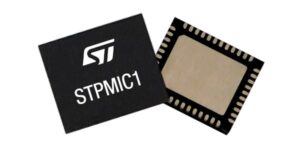Check out the video for our webinar on power management. It offers a lot of tips and tricks on design considerations and product features.
To improve the accessibility of our content, please find the audio version of this blog post.
Today, ST will hold a webinar on power management solutions for IoT and industrial applications. Unfortunately, too many teams still view power devices as commodities, only to suffer significant breakdowns, delays, or recalls because of a faulty design. It can especially be an issue when working on industrial applications because certifications and harsher operating conditions often require a more robust system. Hence, among other things, the webinar will focus on buck regulators for working voltages of up to 60 V or devices with a particularly low quiescent current. The presentation will also cover low dropout converters for 5 V and 24 V buses as well as our STPMIC1 power management IC. The device includes 14 output rails, four buck switched-mode power supplies, and it works great for application processors that rely on external RAM, flash, and a slew of other devices.
Power Management with STPMIC1

ST introduced the STPMIC1 with the STM32MP1, our first STM32 microprocessor. Designing for an MPU and its many external components necessary is a complex subject matter. As a result, we came up with the STPMIC1 to vastly facilitate the conception of the power stage. We recently delved into Octavo and their OSD32MP15x SiP that heavily relies on our power management IC. Thanks to the STPMIC1 wide power input voltage range, its six LDOs, and its boost SMPS, the System-in-Package can power the STM32MP1, various memory configurations, and three USB ports. Octavo Systems also explained that using the IC from ST enabled them to eliminate some bulk and bypass capacitors, thus simplifying their designs, reducing their costs, and increasing the system’s overall reliability. Taking part in today’s webinar will ensure attendees can more easily enjoy the same benefits.
Flexibility and Efficiency
The rest of the webinar will touch on our vast catalog of power devices. Any attempt at exhaustivity would be futile, but attendees will leave with a better understanding of some of our design principles, such as flexibility and efficiency. For instance, last year, we introduced the ST1PS01, a nano-quiescent step-down converter with the lowest output in the industry. Similarly, our LDOs are popular for their fast response and low quiescent currents thanks to innovations in control loops as well as overall architectures. Another example is our A7987, which offers a monolithic architecture for higher integration, while still providing flexible current limitations and an innovative control system that ensures a low quiescent current. The webinar will also help engineers protect their systems against electrostatic discharges.
